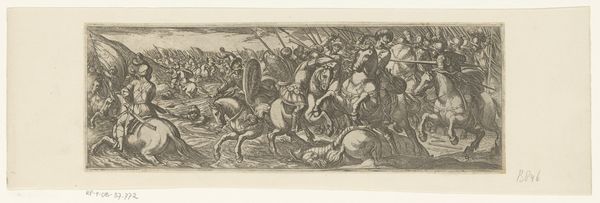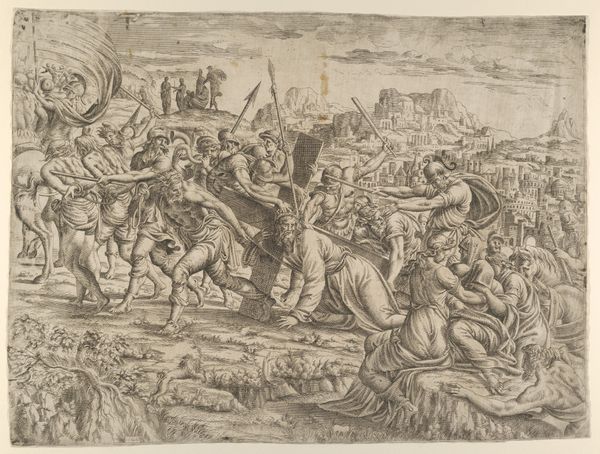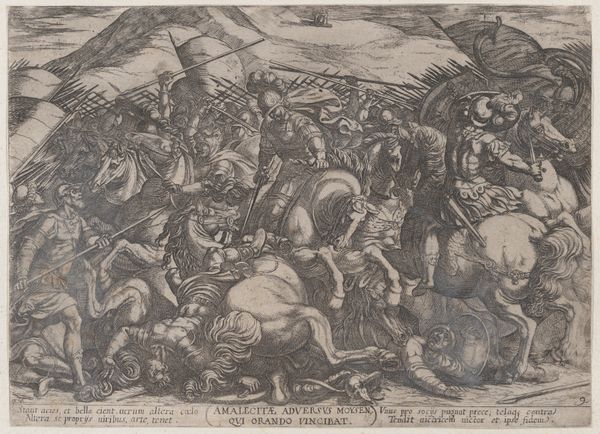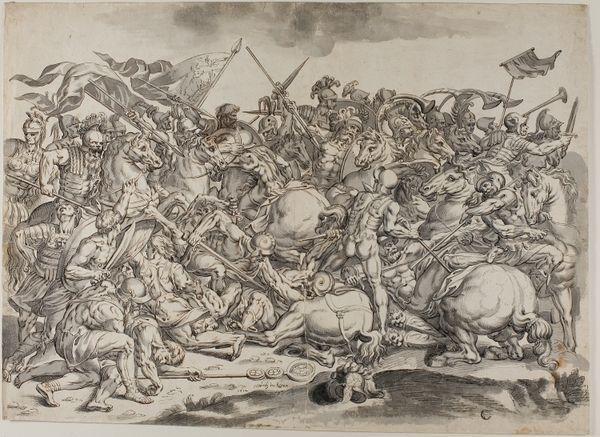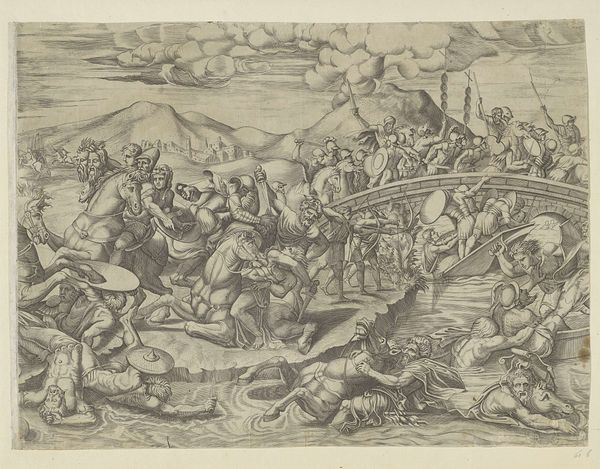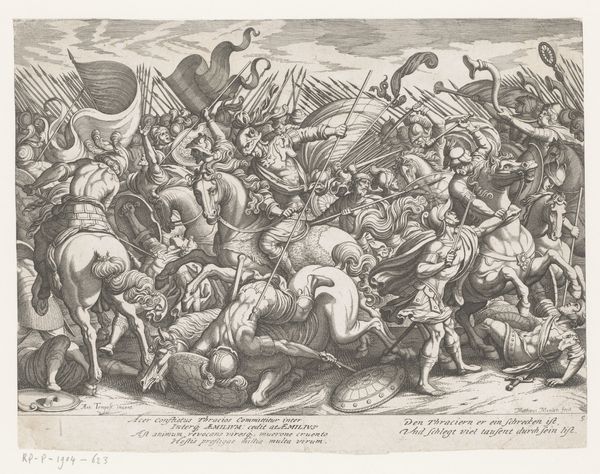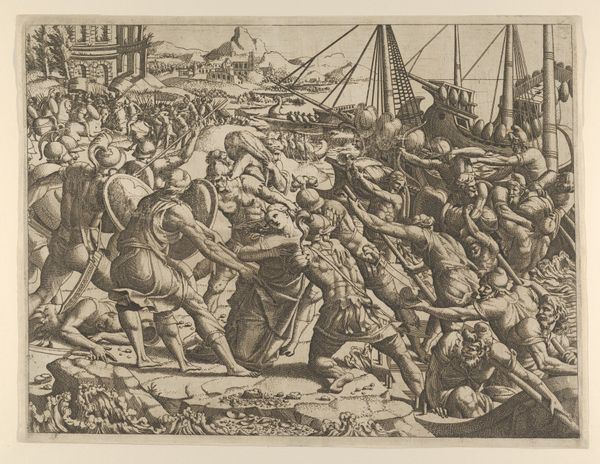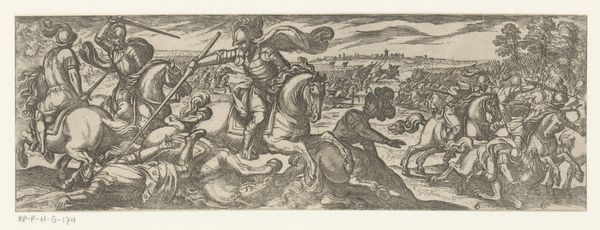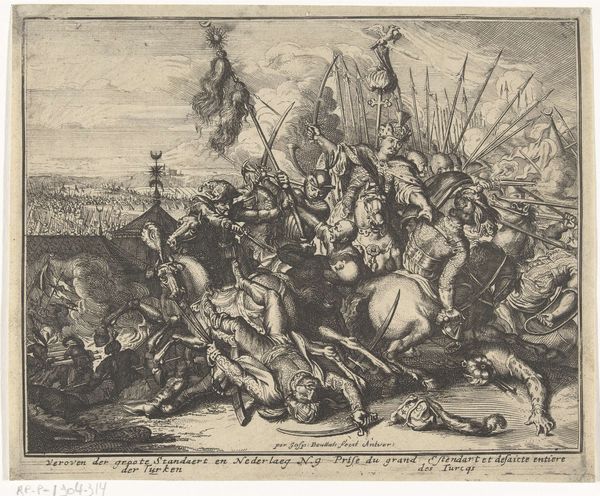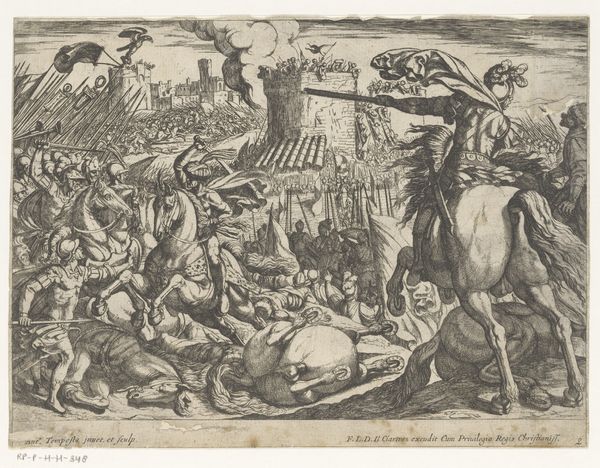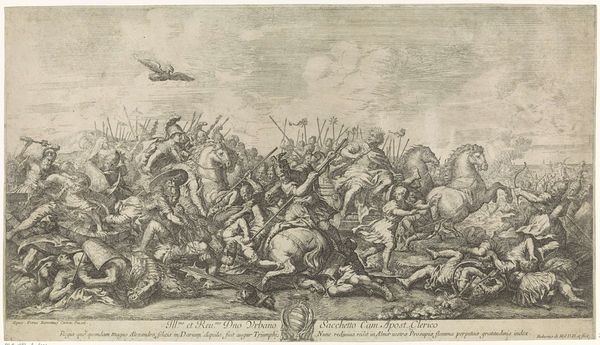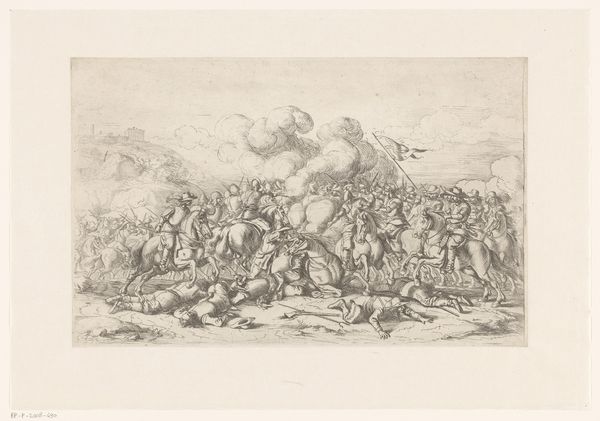
drawing, print, engraving
#
drawing
#
narrative-art
#
baroque
#
ink painting
# print
#
figuration
#
history-painting
#
engraving
Dimensions: sheet: 16 3/4 x 11 1/4 in. (42.5 x 28.5 cm)
Copyright: Public Domain
Curator: Here we have "The Death of Camilla," an engraving dating roughly from 1555 to 1630, attributed to Antonio Tempesta, now residing at the Metropolitan Museum of Art. Editor: What strikes me immediately is the chaotic energy—a swarm of figures rendered in a tight, almost suffocating composition. It’s quite visceral despite the remove of the medium. Curator: Visceral indeed. Note the dynamism inherent in the baroque style; the artist employs diagonal lines and a multitude of figures to create a sense of overwhelming movement and drama. Consider, too, the stark contrast achieved through the engraving technique. Editor: Right, the technique. Engraving, a subtractive process requiring immense skill, precisely the removal of material to produce this scene. And the paper it's printed on—where was it made? How was it made? Those details offer a crucial context. What kind of labor went into this object's creation and consumption? Curator: An astute point. The emphasis here is clearly on narrative. "The Death of Camilla" presents a scene teeming with soldiers on horseback, brandishing weapons amidst a landscape of conflict. The implied narrative is what shapes the composition. Editor: It makes you wonder, doesn't it? The context in which the prints are consumed might be different from how Tempesta perceived it. The image is powerful regardless. Curator: Absolutely. This scene encapsulates both the dynamism of baroque art and its function as historical record and spectacle. The formal rigor amplifies its impact. Editor: And the impact would be far more felt when considering production of not just art, but all materials present within it—paper, ink, labor itself. The story of production of this print is another narrative. Curator: It provides us with ample avenues for aesthetic investigation. Editor: And, undeniably, a great many questions regarding social structures during the artwork's conception. A lot to ponder, really.
Comments
No comments
Be the first to comment and join the conversation on the ultimate creative platform.
